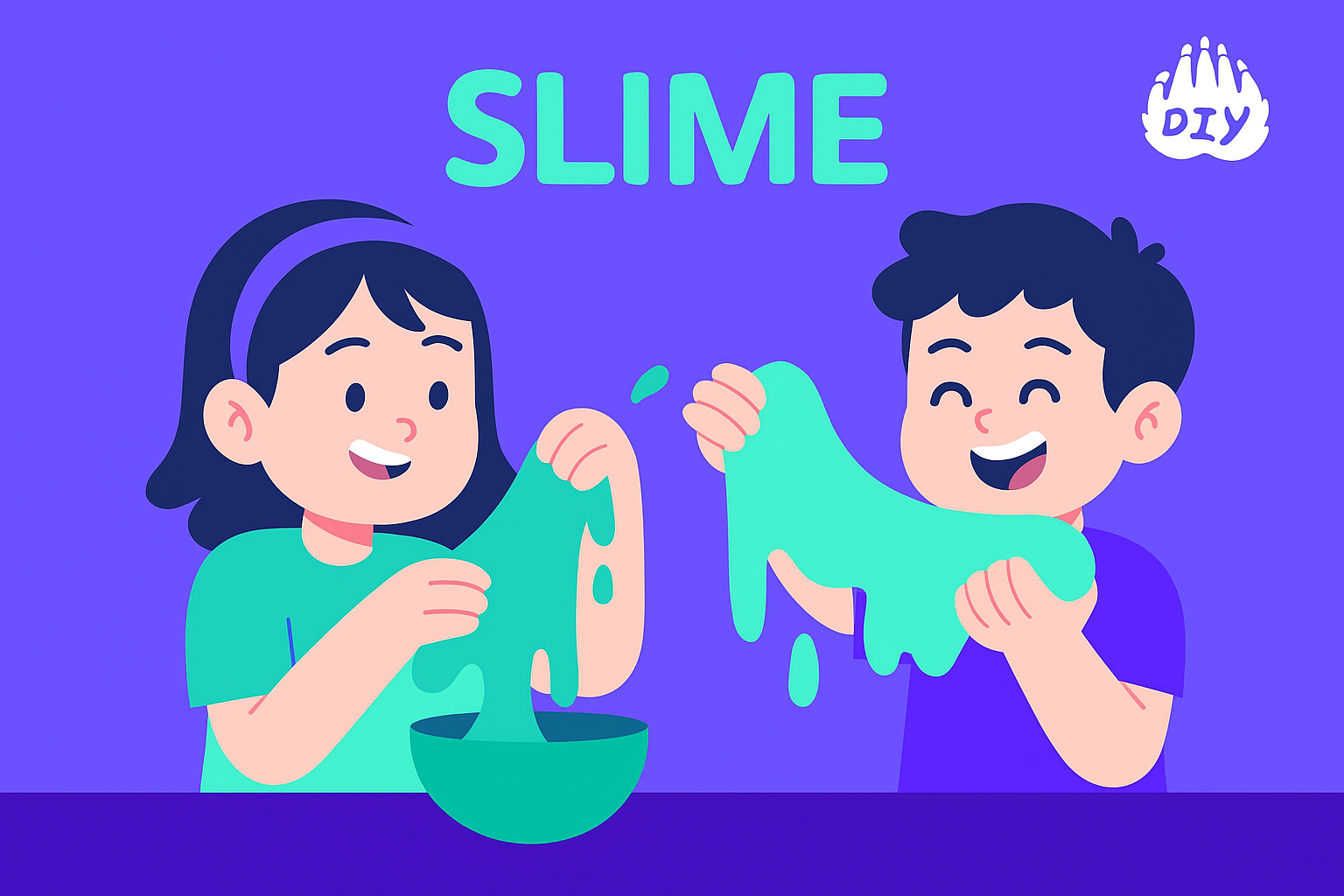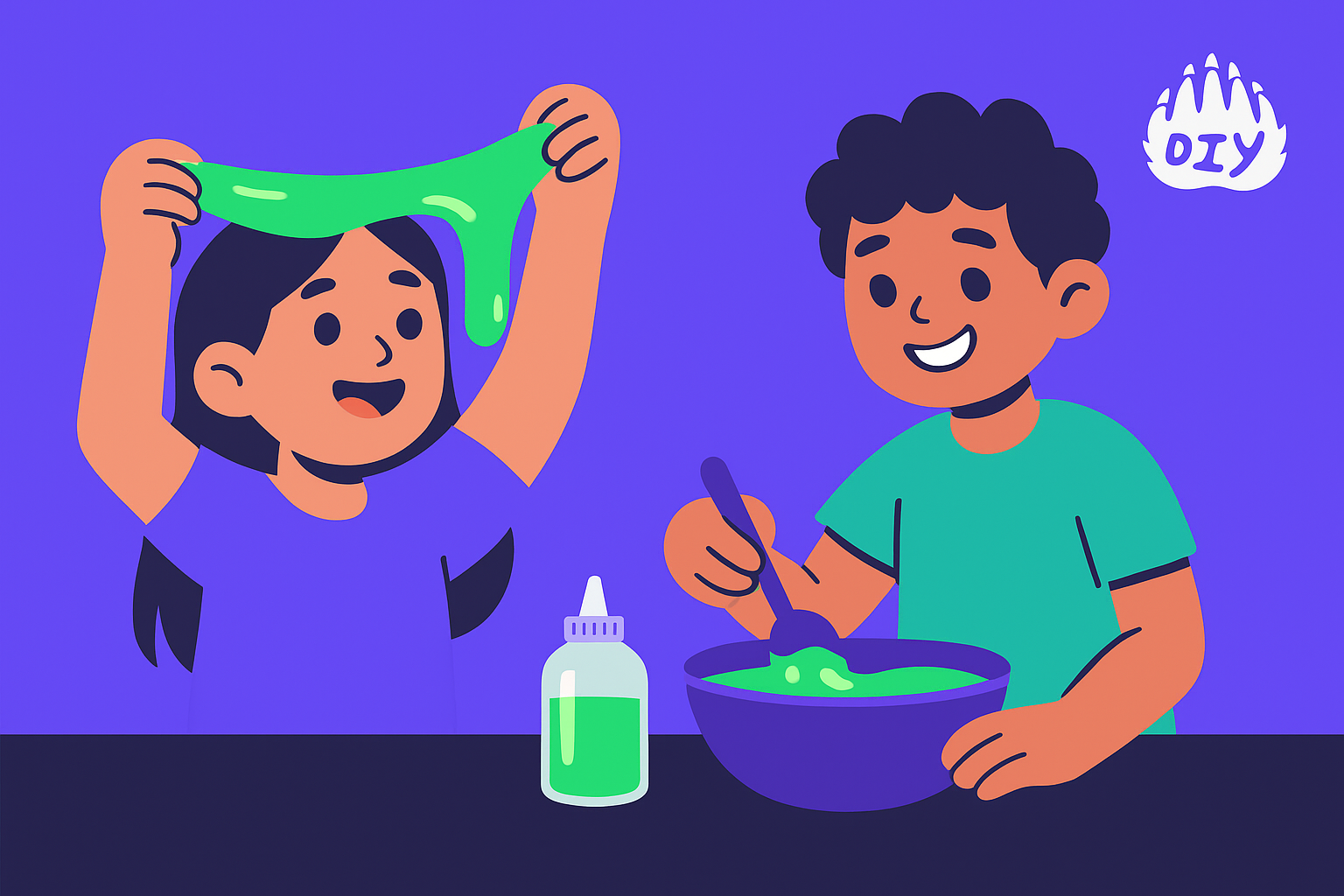Slime has taken over playrooms, classrooms, and social media feeds and it’s not slowing down. Kids love it, parents have mixed feelings about it, and the internet is overflowing with recipes, tutorials, and glittery creations. From ASMR videos to easy guides on how to make slime at home, the trend shows no sign of fading. But the question remains: is slime actually good or bad for kids? Let’s explore the science, psychology, safety concerns, and parenting perspectives behind this popular play trend.
What Is Slime, Really?
Slime is best described as a non-Newtonian fluid, a substance that doesn’t behave like a typical liquid or solid. It’s stretchy, squishy, moldable, and oddly satisfying to play with. This unique texture comes from a simple chemical reaction. When white school glue (PVA glue) is mixed with an activator like borax, saline solution with baking soda, or liquid starch, the glue’s molecules link together to form a thick, elastic substance that’s irresistible to kids.
But slime has evolved beyond just a fun experiment. As we discussed in our guide on what slime really means, it has become a cultural and creative movement fueling everything from DIY projects to viral trends.
For families seeking gentler options, safe and glue-free slime recipes have gained popularity. Common alternatives include cornstarch, chia seeds, and even psyllium husk, which create a similarly gooey texture without traditional binders. Likewise, the rise of slime without activator recipes borax-free and toddler-friendly caters to younger children and those with skin sensitivities.
Whether store-bought or homemade, slime’s appeal lies in its versatility, texture, and endless room for creativity.

Why Kids Love Slime (The Good Side)
Slime isn’t just trendy, it has real developmental and psychological benefits.
1. Sensory Play
Slime is a full sensory experience. Kids engage their sense of touch by stretching, poking, and molding the slime. For many, this kind of tactile feedback is calming and therapeutic, especially for children with sensory processing disorders or autism.
2. Imagination and Creativity
From glitter and beads to neon colors and scents, slime is endlessly customizable. Kids can invent their own recipes, experiment with textures, and express creativity through their creations.
3. STEM Learning
Making slime teaches basic science concepts. polymers, chemical reactions, and measurement. It’s a hands-on way to engage kids in STEM without them even realizing it.
4. Stress Relief and Focus
Just like fidget toys, slime can help children (and even adults) manage anxiety or improve focus. The repetitive motions of playing with slime can soothe racing thoughts and encourage mindfulness.
The Downside of Slime (What to Watch For)
As much as slime offers benefits, there are a few important concerns for parents to keep in mind.
1. Potentially Toxic Ingredients
Some slimes contain ingredients like borax, which can cause skin irritation or more serious effects if ingested. Commercial slime kits may include fragrances and dyes that are not hypoallergenic.
2. Allergic Reactions
Children with sensitive skin may react to certain slime components. Reactions can include rashes, itching, or watery eyes. Always perform a patch test or choose recipes made with natural ingredients.
3. Choking Hazard for Young Children
For toddlers, slime can be a hazard if accidentally swallowed. Many slimes include beads or small decorations that increase the risk of choking.
4. The Mess Factor
Slime can get stuck in hair, carpets, furniture, and clothing. Parents often find themselves scrubbing good off surfaces, sometimes unsuccessfully. For cleaner play, consider using a tray or plastic mat.

What Experts and Parents Say
Many pediatricians agree that slime is safe when used appropriately and under supervision. The key is ensuring the ingredients are non-toxic and suitable for the child’s age.
Child psychologists note that slime can support emotional regulation. The sensory feedback it provides helps children who are overstimulated, distracted, or struggling to focus. However, they also caution against excessive screen time tied to slime videos, which can be overstimulating or lead to obsession.
Parents’ opinions vary. Some love that it keeps their kids entertained for hours, while others find the mess and potential safety risks outweigh the benefits. The consensus? Supervised, age-appropriate slime play is generally safe and beneficial.

How to Make Slime Safer at Home
If you're thinking of letting your child explore slime, here are a few practical safety tips.
Choose non-toxic ingredients. Stick with washable school glue and avoid borax for younger kids. Look for labels that say “non-toxic” or “kid-safe.”
Try alternative recipes. Use cornstarch and water (Oobleck), chia seeds and water, or shampoo and salt for glue-free, activator-free slime.
Store slime properly. Keep it in an airtight container when not in use to avoid bacterial growth or drying out.
Supervise younger children. Don’t leave toddlers unattended with slime. They may be tempted to taste it or put pieces in their nose or ears.
Clean hands and surfaces. Wash hands before and after play. Use plastic trays or silicone mats to contain the mess.
Alternatives to Traditional Slime
If you’re not sold on the idea of homemade goo, there are plenty of slime alternatives that offer similar benefits.
Kinetic sand. Offers similar tactile play with less mess.
Oobleck. Made from cornstarch and water, fun and safe for all ages.
Play dough or modeling clay. Great for fine motor skills and easy to clean.
Silicone putty or therapy putty. Designed for sensory stimulation and stress relief.
These options are particularly good for families with very young children or children with sensitivities.
Final Verdict if Is Slime Good or Bad for Kids?
Slime isn’t inherently good or bad, it’s all about how it’s used and who’s using it. For most children, slime offers a range of developmental benefits: sensory stimulation, creative exploration, and even emotional regulation. However, when used irresponsibly or made with unsafe ingredients, slime can pose real risks. Thankfully, there are safer options available, including recipes for slime without activator or slime without glue, which are ideal for younger kids or those with sensitive skin. As a parent or caregiver, your role is to guide, supervise, and ensure that the slime your child is using is safe, age-appropriate, and balanced with other forms of play. If your child enjoys slime and it’s part of a healthy routine, there’s no reason to ban it. Just play smart, stay informed, and embrace the stretchy fun.
FAQs
Can slime be toxic to children?
Yes, if it contains ingredients like borax, strong fragrances, or dyes. Use kid-safe recipes and always supervise play.
What age is safe to play with slime?
Ages 3 and up, with adult supervision. Toddlers should avoid slime with beads or harsh ingredients.
How can I make slime without borax or glue?
Use natural ingredients like cornstarch, shampoo, or psyllium husk for safer alternatives.
Is slime safe for toddlers?
Generally no traditional slime may pose choking or chemical risks. Opt for edible or taste-safe versions.
Can slime help with anxiety or ADHD?
Yes, many therapists and parents use slime as a sensory tool to reduce stress and improve focus.
What are the best slime alternatives for sensitive skin?
Oobleck, kinetic sand, and modeling dough are safer options that don’t irritate skin.
Why does slime sometimes smell bad?
Improper storage, bacterial growth, or chemical ingredients may cause unpleasant odors. Always store in airtight containers.
How do I remove slime from carpet or hair?
Use vinegar or rubbing alcohol on surfaces. For hair, apply oil or conditioner to break it down gently.


